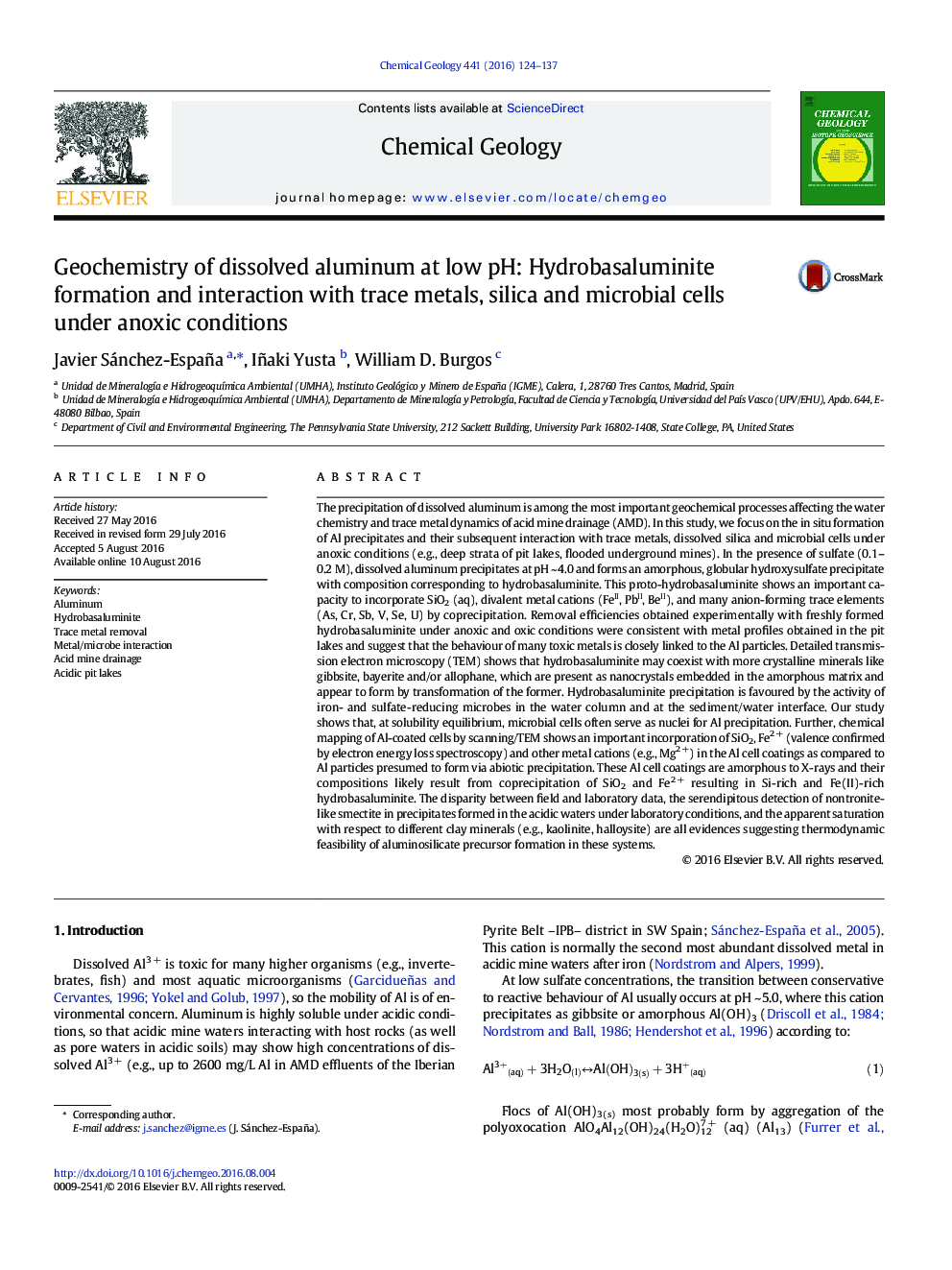| کد مقاله | کد نشریه | سال انتشار | مقاله انگلیسی | نسخه تمام متن |
|---|---|---|---|---|
| 4698212 | 1637533 | 2016 | 14 صفحه PDF | دانلود رایگان |

• Hydrobasaluminite precipitation in anoxic mine waters occurs by in situ neutralization and is promoted by microbial activity
• Coprecipitation with hydrobasaluminite affects greatly the concentration of silica and many trace elements
• Microbial cells present in the acidic waters act as nuclei for Al precipitation and promote further sorption of Fe(II) and Si
• Hydrobasaluminite is metastable and tends to transform to more crystalline phases like gibssite, bayerite and/or allophane
• The interaction of aluminum with dissolved silica may lead to the formation of aluminosilicates in acid mine waters
The precipitation of dissolved aluminum is among the most important geochemical processes affecting the water chemistry and trace metal dynamics of acid mine drainage (AMD). In this study, we focus on the in situ formation of Al precipitates and their subsequent interaction with trace metals, dissolved silica and microbial cells under anoxic conditions (e.g., deep strata of pit lakes, flooded underground mines). In the presence of sulfate (0.1–0.2 M), dissolved aluminum precipitates at pH ~ 4.0 and forms an amorphous, globular hydroxysulfate precipitate with composition corresponding to hydrobasaluminite. This proto-hydrobasaluminite shows an important capacity to incorporate SiO2 (aq), divalent metal cations (FeII, PbII, BeII), and many anion-forming trace elements (As, Cr, Sb, V, Se, U) by coprecipitation. Removal efficiencies obtained experimentally with freshly formed hydrobasaluminite under anoxic and oxic conditions were consistent with metal profiles obtained in the pit lakes and suggest that the behaviour of many toxic metals is closely linked to the Al particles. Detailed transmission electron microscopy (TEM) shows that hydrobasaluminite may coexist with more crystalline minerals like gibbsite, bayerite and/or allophane, which are present as nanocrystals embedded in the amorphous matrix and appear to form by transformation of the former. Hydrobasaluminite precipitation is favoured by the activity of iron- and sulfate-reducing microbes in the water column and at the sediment/water interface. Our study shows that, at solubility equilibrium, microbial cells often serve as nuclei for Al precipitation. Further, chemical mapping of Al-coated cells by scanning/TEM shows an important incorporation of SiO2, Fe2 + (valence confirmed by electron energy loss spectroscopy) and other metal cations (e.g., Mg2 +) in the Al cell coatings as compared to Al particles presumed to form via abiotic precipitation. These Al cell coatings are amorphous to X-rays and their compositions likely result from coprecipitation of SiO2 and Fe2 + resulting in Si-rich and Fe(II)-rich hydrobasaluminite. The disparity between field and laboratory data, the serendipitous detection of nontronite-like smectite in precipitates formed in the acidic waters under laboratory conditions, and the apparent saturation with respect to different clay minerals (e.g., kaolinite, halloysite) are all evidences suggesting thermodynamic feasibility of aluminosilicate precursor formation in these systems.
Figure optionsDownload as PowerPoint slide
Journal: Chemical Geology - Volume 441, 21 November 2016, Pages 124–137